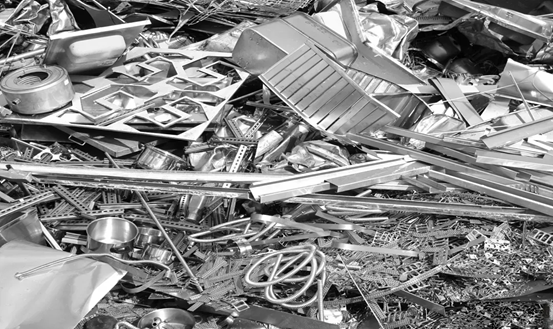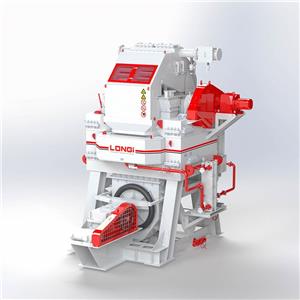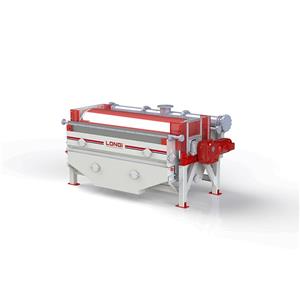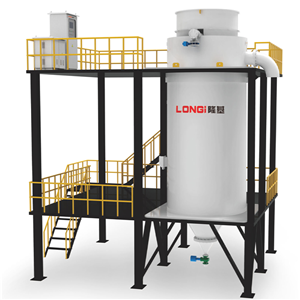Energy-saving and environmentally friendly recycled aluminum
The secondary aluminum industry has the advantages of resource conservation, energy conservation and environmental protection, and is an important way for the sustainable development of the aluminum industry.
Especially under the situation of China's lack of bauxite resources and the country's vigorous efforts to promote energy conservation and emission reduction, green development, and the implementation of the "carbon peak and carbon neutral" strategy, the development of the secondary aluminum industry is of even greater significance.

Major achievements in the development of China's secondary aluminum industry
Since China's reform and opening up, after 40 years of development, the supply of recycled aluminum raw materials has continued to increase, and the scale of the industry has continued to expand.
During the "Thirteenth Five-Year Plan" period, industrial transformation and upgrading accelerated. China's secondary aluminum industry has basically completed the transition from labor-intensive to technology-intensive. Output has continued to increase, and products are widely used in transportation, construction, hardware manufacturing, machinery and other industries. The coordinated development of upstream and downstream industries has achieved remarkable results.
At the same time, the technical level of the secondary aluminum industry has been significantly improved, and related supporting systems such as equipment manufacturing, warehousing and logistics, and auxiliary material supply have been continuously improved. China's secondary aluminum industry has become an important area of the country's circular economy, and its influence on global aluminum recycling is increasing.
Raw material recycling channels have been continuously improved, and the scale of the industry has continued to expand. At present, among the recycled aluminum raw materials, China's domestic recycled aluminum scrap accounts for 89%, and the pattern of raw materials is more prominent; the recycled aluminum production capacity reaches about 14 million tons, accounting for about 30% of the world's total recycled aluminum, and has become the world's first major secondary aluminum country; The industry presents a "columnar" distribution, and the trend of balanced development is obvious; large-scale recycling companies have gradually become an important scrap aluminum supply channel, and the industry concentration has continued to increase;
The pretreatment technology has been significantly improved, and proprietary technology and industrial characteristics have been formed. The comparison of key production indicators of the digital workshop information system of some secondary aluminum enterprises is remarkable. The design and equipment manufacturing capabilities of the industry are also continuously improving, and the automatic pretreatment process has made great progress; Advanced flue gas dust removal equipment has been widely used, dioxin treatment technology and nitrogen oxide treatment technology have also been promoted, and achieved good environmental protection results; leading companies have actively increased R&D investment and cultivated a group of experienced Skilled workers;
Product quality has been steadily improved, and application areas have continued to expand. China's secondary aluminum products not only continue to increase in the field of application and scale in the domestic market, but also occupy a large share in the international market; with the continuous improvement of pretreatment technology and smelting technology, the quality of China's secondary aluminum alloy has been improved, and the output and consumption have been improved. There has also been a certain increase.
The cycle of green resources has accelerated, and the effect of energy conservation and carbon reduction has been remarkable. During the "13th Five-Year Plan" period, China’s secondary aluminum production totaled approximately 34.8 million tons. Compared with the production of the same amount of electrolytic aluminum, 139.2 million tons of aluminum ore were less mined, 120 million tons of standard coal were saved, and 770 million cubic meters of water was saved. Emission of 380 million tons of carbon dioxide and reduction of 696 million tons of solid waste.
The main problems in the development of China's secondary aluminum industry
China's secondary aluminum has made great achievements in the past period of time, but we should be soberly aware that the proportion of China's secondary aluminum output to the total aluminum output is still at the level of developed countries in the 1980s. China's current secondary aluminum industry's overall level and The ability is still difficult to adapt to the needs of industrial upgrading and green and high-quality development.
The industrial support system still needs to be improved. There is a lack of top-level design and overall planning for industrial development, value-added tax and income tax policies need to be improved, standards and norms construction started late, and professional skills are in urgent need of improvement.
The degree of raw material security needs to be improved. The domestic raw material recycling model is in urgent need of improvement, and the advantages of international raw material procurement have weakened.
Insufficient R&D investment and weak basic research. There is a lack of professional and standardized secondary aluminum engineering design and research institutions, and the technological innovation system of "enterprise as the main body, market-oriented, and in-depth integration of production, education and research" is not yet sound.
The high-value utilization of products accounts for a relatively low proportion. The added value of products needs to be improved, the manufacturing costs of enterprises continue to rise, and the ability of enterprises to finance and resist risks is weak.
The understanding of secondary aluminum needs to be improved. The society's understanding of the recycled metal industry has remained at a low level for a long time. The social recognition of recycled metal products needs to be improved, and the social and environmental benefits of the industry have not been widely recognized.
Analysis on the Development Environment of China's Secondary Aluminum Industry
The international development environment is complex and changeable. With the continuous deepening of China's green and high-quality development strategy, the secondary aluminum industry is facing new opportunities and challenges in the new era, has huge development potential and space, and ushered in a new development period .
According to resource and consumption forecasts, China’s electrolytic aluminum consumption is expected to reach its peak in 2024. After that, aluminum consumption will basically be at a plateau. Due to policy and economic reasons, the output of primary aluminum will gradually shrink, while the output of secondary aluminum will increase year by year. The proportion of Chinese enterprises has gradually increased.
At present, China is still in the accelerated development stage of industrialization and urbanization, and the consumption of aluminum is still on the rise. The demand for aluminum in construction, transportation, and durable consumer goods continues to expand, and the application of aluminum is also expanding. The lightweight of automobiles is being vigorously promoted, and the consumption of cast aluminum alloys is on the rise. The amount of domestic scrap aluminum resources is continuously increasing, the relevant industrial policies are constantly being improved, the strategic position of the secondary aluminum industry is continuously improving, and the industrial development environment is continuously optimized.
The potential of raw material security is huge. According to the research on the scrap cycle of various aluminum products, China will soon become the country with the largest amount of aluminum scrap resources in the world. At the same time, a large number of urban mineral resources overseas are also an important focus for my country to form a stable and safe international supply channel in the future;The market demand is strong. It is expected that during the "14th Five-Year Plan" and "15th Five-Year Plan" period, greater potential will be stimulated in terms of new energy auto parts, building materials, consumer electronics housing materials, hardware accessories, and photovoltaic base materials;
The prospects for collaboration in the upstream and downstream industrial chains are broad. In addition to the direct distribution of aluminum alloy melts, secondary aluminum companies, can production companies, and aluminum foil processing companies jointly promote the reclassification and reduction of waste cans and aluminum foil;
Policies promote a favorable development environment. The industrial policy environment is constantly being optimized, and the advantages and importance of the renewable non-ferrous metal industry in saving resources, protecting the environment, and energy saving and emission reduction are bound to be further highlighted;
The technology market is gradually active. With the implementation of the green development strategy and the demand for industrial transformation and upgrading, my country's secondary aluminum industry has great potential for new technologies in the future.




